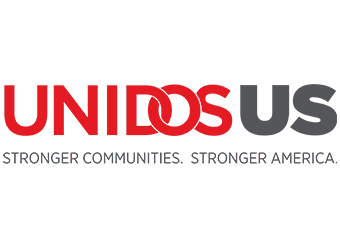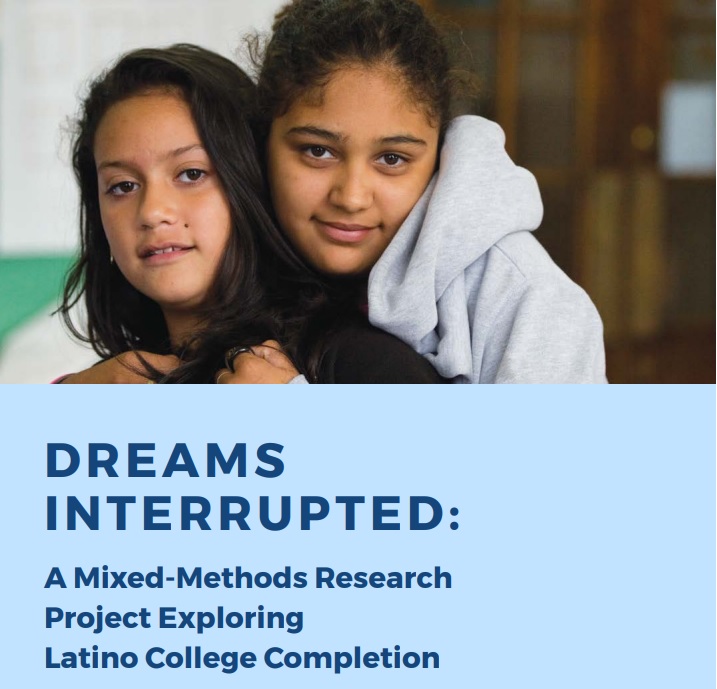 Between September 15 and October 15 each year, National Hispanic Heritage Month spotlights the contributions and accomplishments of Latinos in the U.S. The fact that there are almost 3.8 million Latinos enrolled in colleges and universities nationwide is certainly worth celebrating.
Between September 15 and October 15 each year, National Hispanic Heritage Month spotlights the contributions and accomplishments of Latinos in the U.S. The fact that there are almost 3.8 million Latinos enrolled in colleges and universities nationwide is certainly worth celebrating.
However, a recent UnidosUS report — “Dreams Interrupted: A Mixed Methods Research Project Exploring Latino College Completion” — outlines some of the biggest reasons Latinos are about half as likely as their White peers to hold at least an associate degree.
While there are many different barriers to college completion for this segment of the population, the report sought to explore and interrogate the notion that Latino students are particularly averse to accruing student debt.
“The Impossible Dilemma”
The report surveyed more than 1,500 individuals age 18-40 who started — but never completed — college and are no longer enrolled. Latino respondents reported that their desire to avoid debt was a barrier to completion at a rate of almost eight percentage points higher than non-Latinos.
“I was never really shown how to borrow money,” a respondent named Isabella said in the report. “Growing up, I always saw my parents and family work hard for what they have. So we really weren’t shown that borrowing was okay unless you’re really, really, really in desperate need of it. And then you have to make sure that you’re going to pay it back.”
Responses like Isabella’s have created what the report calls an “impossible dilemma” of untenable financial and academic insecurity. In other words, students said they have to decide whether to take on education debt that burdens their family and creates mental health strain or forego education debt in favor of looking for a job to support themselves and enduring the physical and psychological strain of working long hours.
Data shows that Latinos contemplating borrowing money to finance their education were affected and discouraged by the realities and expectations of experiences before and after college, including awareness of predatory lending, damaging experiences with debt, and a discriminatory and uncertain labor market. As a result, avoiding debt is often seen by Latino students as a mechanism to protect their larger family.
Transportation remains a significant barrier
 In addition to debt aversion, the survey results uncovered a different educational barrier that impacts Latino college students even more than their non-Latino counterparts.
In addition to debt aversion, the survey results uncovered a different educational barrier that impacts Latino college students even more than their non-Latino counterparts.
Latino students reported “transportation problems” as a significant barrier to college completion at a 19% higher rate than non-Latinos. Additionally, out of the nearly 800 respondents who said that they left college because they could no longer afford the cost, Latinos reported that transportation caused financial stress at almost seven percentage points more than non-Latino respondents.
Michelle, another survey respondent, said her transportation issues left her with student debt and no degree.
“I was driving to work, then driving to school, then driving back home for a break. I remember taking two-minute naps,” Michelle said. After her car broke down, she had to drop a class that was only offered at a campus 45 minutes away and what would typically be a 25 to 30-minute commute by car could swell to two and a half hours via public transportation.
Although survey respondents shared a wide range of transportation barriers, the great majority of them expressed that transportation was a problem that needed to be solved in order to continue in college.
How to address these barriers
Although Hispanic Heritage Month concludes October 15, Latino college students will need support well beyond then to achieve their education and career goals.
In order to address some of the barriers highlighted by survey respondents, the report suggests:
- Messaging and communication about debt aversion must account for its complexities.
- Latino students deserve and would benefit from targeted, personal, specific, linguistically-appropriate, and culturally-appropriate information about higher education and its financing from trusted intermediaries.
- Any interventions must recognize and account for the way that barriers to college completion are inextricably intertwined.
- Interventions, including transportation interventions, must be scaled and delivered at every level: individual, family, institutional, and structural.
While Latino students had been enrolling in college at record numbers in recent years, data from the National Student Clearinghouse Research Center revealed that Latino undergraduate enrollment fell by 7% in Spring 2021 compared to the previous year. In order to make Florida Talent Strong, we need to address barriers to college completion for all Floridians. Now is the time to start addressing these barriers and help close the attainment gap for Latino students.
RELATED ARTICLES:
Targeted supports help Latino students in college, according to new report from UnidosUS
